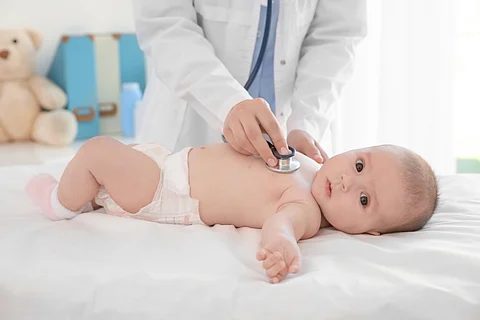MONDAY, March 13, 2023 (HealthDay News) -- In an international consensus statement, published online March 6 in JAMA Pediatrics, recommendations are presented for radiological screening of contact children in the context of child physical abuse.
Kshitij Mankad, M.D., from the Great Ormond Street Hospital for Children in London, and colleagues developed an evidence-based and consensus-derived set of best practices for radiological screening of contact children in the context of suspected physical abuse. The statement was supported by a systematic review of the literature and clinical opinion of 26 experts.
Asymptomatic siblings, cohabiting children, or children under the same care as an index child with suspected child abuse are defined as contacts. The authors note that all contact children should undergo a thorough physical examination and history elicited before imaging. Contact children younger than 12 months should undergo neuroimaging, ideally magnetic resonance imaging, and skeletal survey and those aged 12 to 24 months should undergo skeletal survey, while no routine imaging is indicated for asymptomatic children aged older than 24 months. If abnormal or equivocal at presentation, follow-up skeletal survey with limited views should be performed. Positive findings among contacts should trigger investigation as an index case.
"Radiological screening plays a central role in the multidisciplinary identification of suspected and occult abusive injuries," the authors write. "It is our hope that this international consensus statement will provoke a shift in clinical practice such that the routine screening of contact children is incorporated as a standard of care reflective of society's obligation to the young and vulnerable."
Several authors disclosed providing private medicolegal expertise on instruction by the court.
Abstract/Full Text (subscription or payment may be required)




